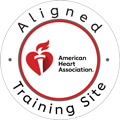First aid training is not merely an optional skill but a fundamental necessity in today’s world. It serves as the cornerstone of preparedness in unforeseen emergencies, offering individuals the ability to provide immediate assistance in critical situations. In this comprehensive exploration, we will delve into the importance, objectives, and goals of first aid training, shedding light on its significance in safeguarding lives and promoting community resilience.
First aid is the initial assistance provided to an individual suffering from injury or illness before professional medical help arrives. Its essence lies not only in its timely intervention but also in its potential to mitigate the severity of an incident. From administering CPR to dressing wounds, the basic principles of first aid encompass a wide array of techniques aimed at stabilizing and supporting the affected person until further medical assistance can be obtained.
Main Objectives of First Aid Training
- Preservation of life: At the heart of first aid training lies the primary objective of preserving life. Immediate response is crucial in critical situations, and first aid equips individuals with the skills to assess and maintain vital functions such as breathing and circulation. Through techniques like CPR and basic airway management, responders can significantly improve the chances of survival for those in distress.
- Prevention of further injury: Another key objective of first aid training is the prevention of further injury. Responders learn how to stabilize injuries effectively, minimizing risks and complications in emergency scenarios. Techniques such as splinting fractures and controlling bleeding are essential skills that can make a significant difference in the outcome of an incident.
- Promoting recovery: Beyond immediate intervention, first aid training also emphasizes the importance of promoting recovery. This includes basic wound care techniques, infection prevention measures, and providing comfort and psychological support to the affected individual. By addressing both physical and emotional needs, responders can contribute to the overall well-being and recovery process of the injured party.
Goals of First Aid Training
Empowering individuals with essential skills: One of the primary goals of first aid training is to empower individuals with essential life-saving skills. By providing comprehensive training in first aid techniques, programs aim to ensure that individuals can confidently respond to emergencies in various settings. This not only enhances individual preparedness but also contributes to building resilient communities capable of effectively handling crises.
Promoting safety and well-being: Education on injury prevention strategies is another crucial aspect of first aid training. By disseminating knowledge on safety measures and first aid techniques, these programs contribute to creating safer environments and reducing the incidence of accidents. From workplace safety protocols to home hazard awareness, the promotion of safety and well-being is a central goal of first aid training initiatives.
Building confidence and readiness: First aid training instills a sense of preparedness and confidence in individuals, enabling them to approach emergencies with calm and competence. By fostering a culture of readiness, training programs encourage proactive involvement and a willingness to assist others in times of need. This not only benefits the individual responder but also strengthens the collective resilience of communities.
Benefits of First Aid Training
Individuals who undergo first aid training experience a range of personal benefits, including enhanced confidence and self-efficacy. Armed with life-saving skills, they gain the ability to respond effectively to emergencies in various settings, thus improving their overall preparedness and resilience.
Communities with widespread first aid knowledge are better equipped to handle emergencies, resulting in an increased likelihood of survival and reduced severity of injuries. By fostering a culture of preparedness and mutual assistance, first aid training contributes to the overall safety and well-being of society as a whole.
Call Us Now
Get the Best CPR Class in Indianapolis Today!
In the workplace, first aid training is not only a legal requirement but also essential for ensuring employee safety and well-being. By complying with safety regulations and providing comprehensive training to staff, employers create a safer work environment and reduce the risk of accidents and injuries.
Challenges and Considerations
Despite the importance of first aid training, accessibility remains a significant challenge for many individuals. Efforts must be made to ensure that training programs are affordable, readily available, and accessible to all segments of society, regardless of socioeconomic status or geographic location.
Some individuals may face barriers such as language barriers, lack of time, or limited resources that hinder their ability to access and participate in training programs. Tailored approaches, flexible training options, and community outreach efforts can help overcome these obstacles and ensure inclusivity in first aid education.
Retaining first aid skills over time is crucial for effective response in emergencies. Continuous education, refresher courses, and skill maintenance programs can help individuals maintain their proficiency and readiness to assist when needed.
First aid training plays a vital role in promoting public safety, well-being, and resilience. By understanding its objectives, goals, and benefits, individuals and communities can prioritize the acquisition of essential life-saving skills. As we navigate an unpredictable world filled with potential hazards and emergencies, let us heed the call to action and embrace the importance of widespread first aid knowledge in safeguarding lives and building stronger, more resilient communities.
Conclusion
As we’ve explored the vital importance of first aid training, it’s clear that being prepared for emergencies can truly make a life-saving difference. Whether it’s administering CPR during a cardiac arrest or managing minor injuries until professional help arrives, the skills gained through first aid training empower individuals to act confidently in critical situations. Let’s not wait for a crisis to strike before taking action. Let’s equip ourselves with the knowledge and skills needed to be everyday heroes. Together, let’s make our communities safer and more resilient.
Take the first step towards becoming a certified life-saver today. Enroll in a CPR certification in Indianapolis with CPR Indianapolis and equip yourself with the skills needed to make a difference in someone’s life.


